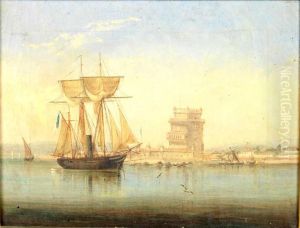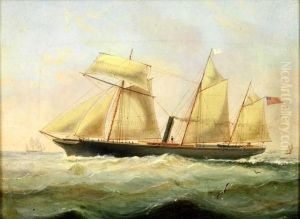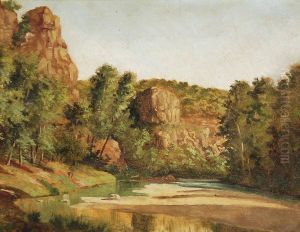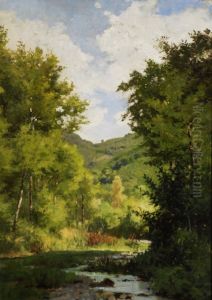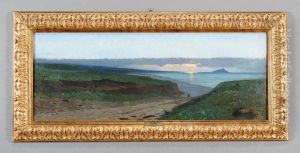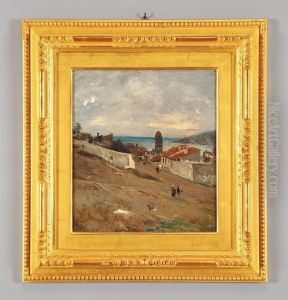Alfredo D' Andrade Paintings
Alfredo D'Andrade was a multifaceted figure in the world of art and architecture during the late 19th and early 20th centuries. Born on April 18, 1839, in Lisbon, Portugal, to a family of Genoese origin, D'Andrade would go on to become a pivotal figure in the cultural and architectural landscape of Italy, particularly in the region of Piedmont. His work and interests spanned various domains, including painting, architecture, archaeology, and preservation, making him a renaissance man of his time.
After moving to Turin, Italy, D'Andrade quickly became integrated into the intellectual and artistic circles of the city. His passion for the medieval and renaissance periods drove him to study and work on the restoration of numerous historic buildings and sites across Italy. D'Andrade was a leading figure in the field of conservation, advocating for the preservation of architectural heritage at a time when such views were not widely held. He played a critical role in the restoration of significant landmarks, such as the Castello del Valentino and the Borgo Medievale in Turin, both of which are celebrated examples of his commitment to blending historical accuracy with creative restoration.
Moreover, Alfredo D'Andrade was instrumental in the establishment of the Museo Nazionale del Risorgimento Italiano, housed in the Palazzo Carignano in Turin. His contributions to archaeology were also noteworthy; he conducted extensive studies and excavations in the region of Liguria, unearthing and documenting medieval sites and artifacts. D'Andrade's work in archaeology was driven by his belief in the importance of understanding the past to preserve it accurately for future generations.
D'Andrade's influence extended beyond his tangible projects. He was a respected member of various cultural and artistic societies, through which he promoted his ideas on conservation and restoration. His writings, including numerous articles and monographs, reflect his deep knowledge of architecture and his progressive views on preservation. D'Andrade's legacy is not only seen in the buildings and sites he helped save and restore but also in the methodologies he developed, which have influenced the field of architectural conservation in Italy and beyond.
Alfredo D'Andrade passed away on September 7, 1915, in Turin. His death marked the end of a career that had significantly impacted the preservation and appreciation of Italy's architectural heritage. Today, D'Andrade is remembered as a pioneer in the fields of conservation and restoration, a visionary who saw the value in the past and worked tirelessly to ensure its survival for future generations.
